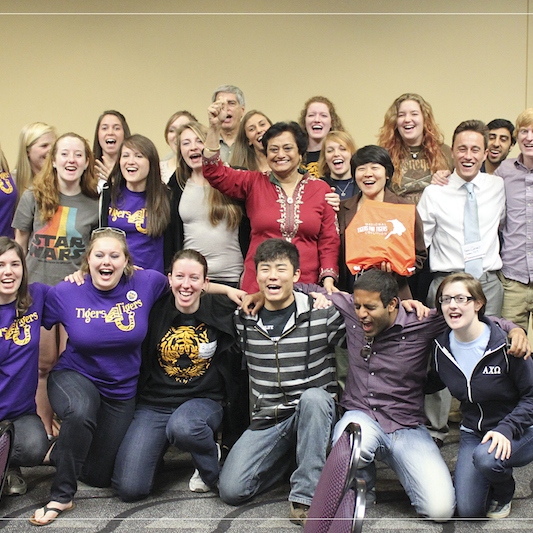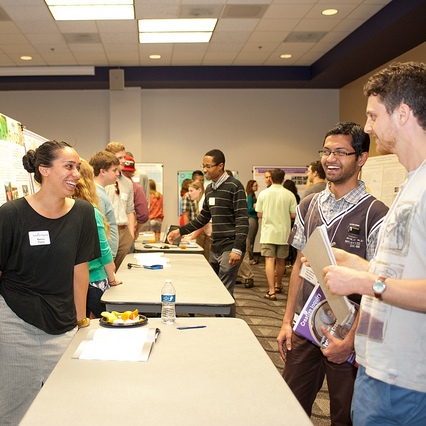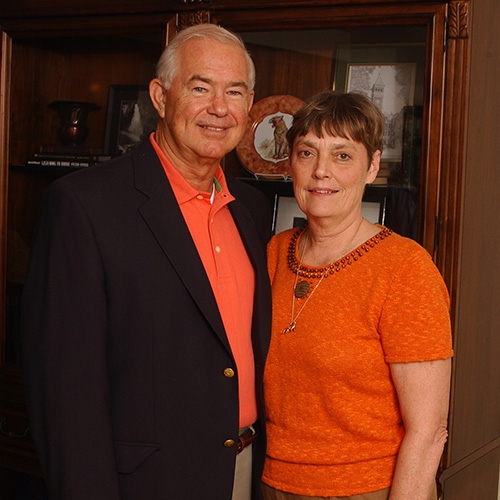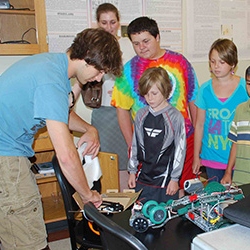Saving Clemson’s Mascot
There are only 3,200 wild tigers left in the world. The enormity of this problem has not gone unnoticed by Clemson students. In 1997, Clemson students founded Tigers for Tigers, a student initiative to support tiger conservation around the world. As Tigers for Tigers president Sean Carnell explains, “There are over fifty schools out there with tiger mascots. Here at Clemson, we know how much pride these mascots make us feel for our school. So we decided to work with other schools to extend the pride from the football field to help real tigers in the wild.”
Initially, Tigers for Tigers aimed to create a national coalition and host the first national summit to promote collegiate awareness about the situation. The student group was able to gain the support of President Barker, who sent letters to other tiger mascot schools to enlist support for the cause. Collaborating with the 57 other tiger mascot universities was not an easy task. Tigers for Tigers advisor, Dr. David Tonkyn, and a group of dedicated students formed a Creative Inquiry team. After two years of hard work, the team made the dream of a national coalition become a reality, as the National Tigers for Tigers Coalition was formed. This united effort allows students across the country to work together through social media, advocacy programs and involvement abroad to help protect tigers. In April 2013, the team hosted a National Tigers for Tigers Summit. The purpose of the Summit was to establish a foundation for the national organization, develop a strategic plan for students helping tigers and promote student awareness of the issues associated with tiger conservation.
The 2013 conference was an enormous success. Featured speakers included Dr. Ron Tilson, a world premiere tiger biologist, Dr. John Fitzgerald, the senior policy director for the Society for Conservation Biology, representatives from the International Fund for Animal Welfare and many others. While sparking awareness and admiration in students interested in tiger conservation, visiting tiger experts also helped the Creative Inquiry team establish Tigers for Tigers as a national organization. Carnell explains, “we built wonderful connections with our partners. Especially at the conference, we worked with wonderful people who knew exactly what needed to happen to make a change. They showed us how national policies are developed. It was way more exciting than reading a textbook.”
Beyond the conference, Tigers for Tigers is working to improve its social media outreach program through developing a Facebook page and filming viral videos to spread awareness. And the Creative Inquiry group aims to promote the Big Cats and Public Safety Protection Act, a federal bill banning the private ownership of big cats in the United States. Also, for the past nine years, Tonkyn and former Director of International Student Services Louis Bregger have offered an opportunity for students to visit India to see tigers in the wild and learn about their conservation. Such opportunities are important for the success of the coalition, Carnell notes, because “that’s where all the motivation started for us. We went to India, saw tigers in the wild, and came back excited to help.” The incredibly diverse number of projects Tigers for Tigers encompasses makes this Creative Inquiry project applicable to students with all sorts of interests including finance, marketing and biological sciences.
As Tigers for Tigers continues to grow and develop, the group hopes to expand on a national level. But as 11 schools are now united across the country, working tirelessly to help real tigers around the world, Tigers for Tigers has successfully made solid steps to saving Clemson’s beloved mascot: the Bengal tiger.










